In pictures: Commons marks 80 years since WW2 bombing
- Published
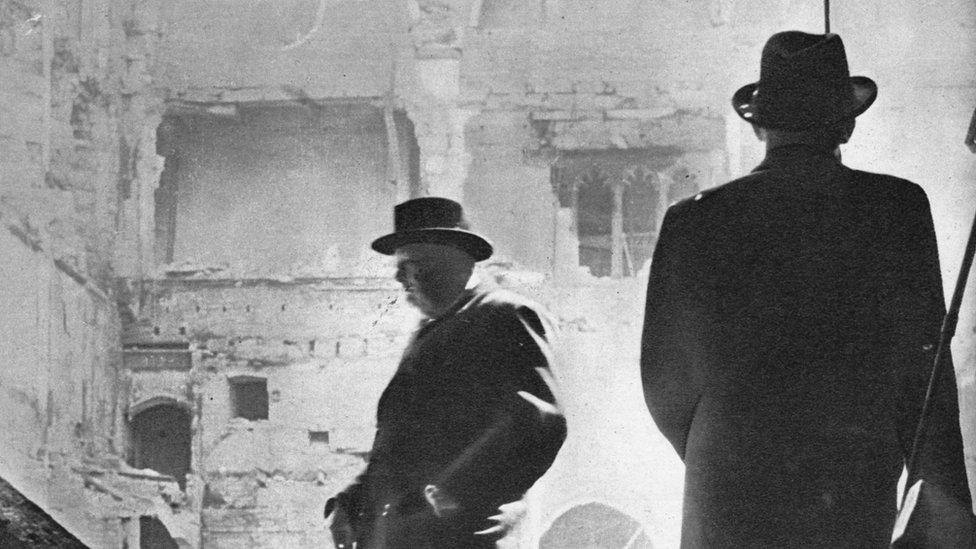
Winston Churchill went to survey the damage
Parliament has paid its respects to three members of staff who lost their lives when a German bomb fell on the House of Commons exactly 80 years ago.
The Luftwaffe attack on 10-11 May 1941 came during the biggest air raid on London during the Second World War.
Across the city, almost 1,500 people were killed, 1,800 seriously injured and 11,000 houses were destroyed. The fires from that night could be seen 160 miles away.
As bombs landed on the Palace of Westminster, one fell directly on the House of Commons. The blaze spread from the chamber to the Members' Lobby, causing the ceiling to collapse.
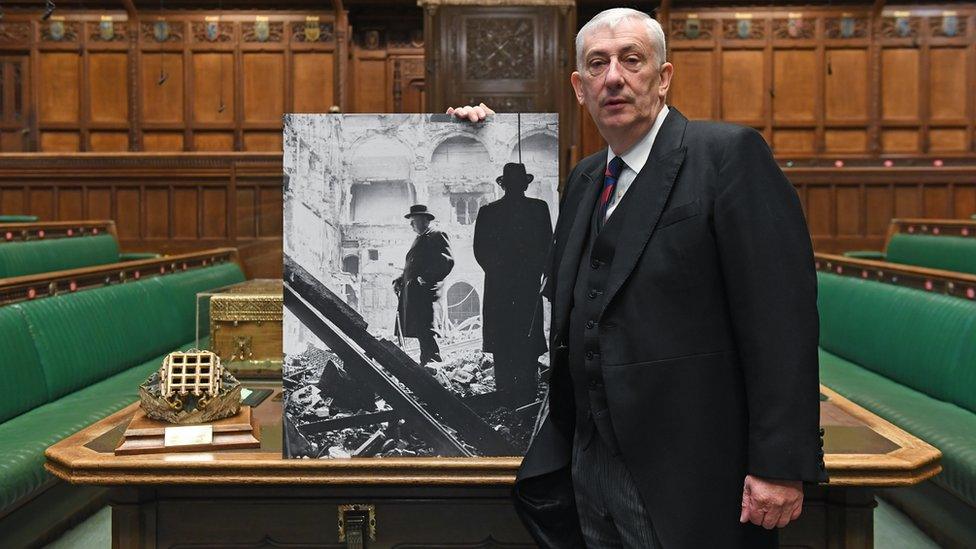
Commons Speaker Sir Lindsay Hoyle in the rebuilt chamber
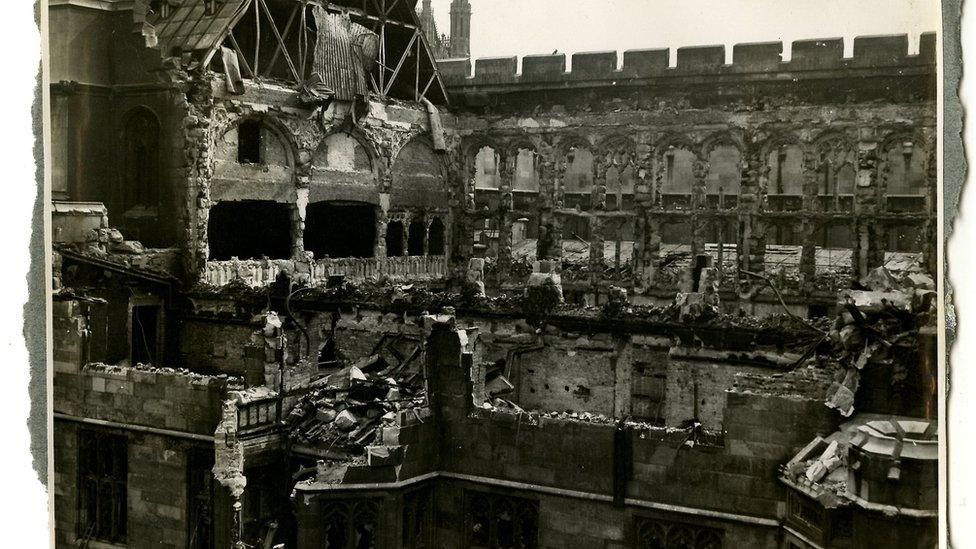
The Commons chamber was completely destroyed in the raid
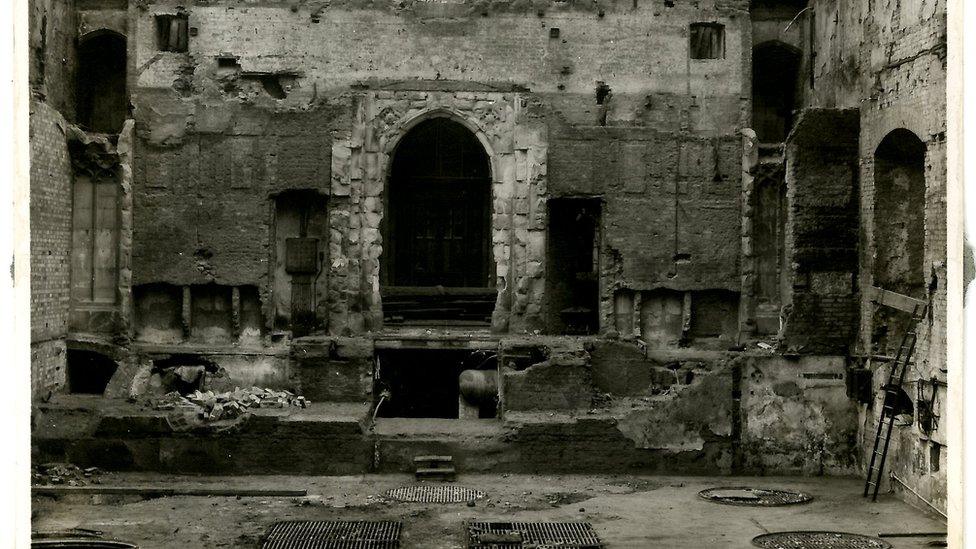
All that was left of the Commons was a smoking shell
Westminster Hall was also hit, along with the House of Lords, the Royal Gallery and Law Lords Corridor, in addition to landmarks, such as Westminster Abbey, Lambeth Palace and the Tower of London.
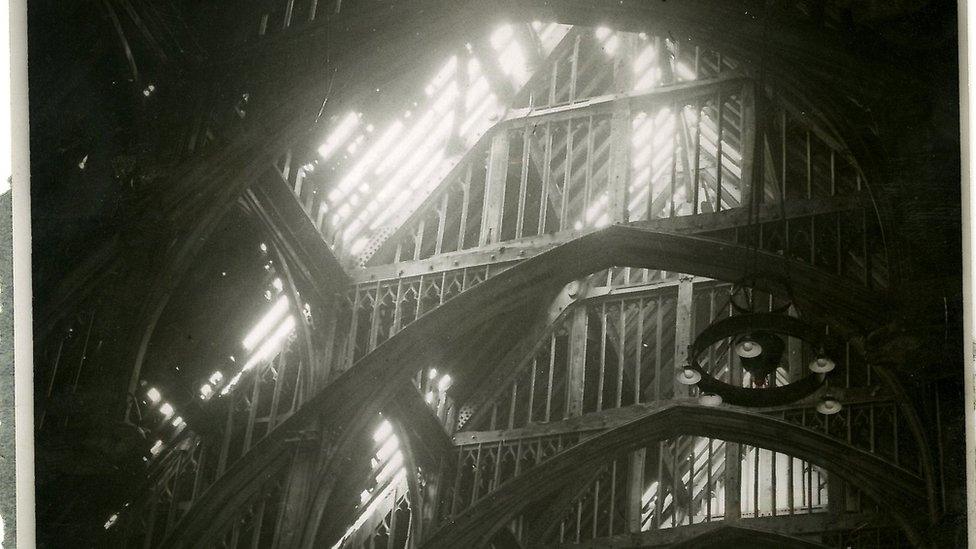
The roof in Westminster Hall was also badly damaged
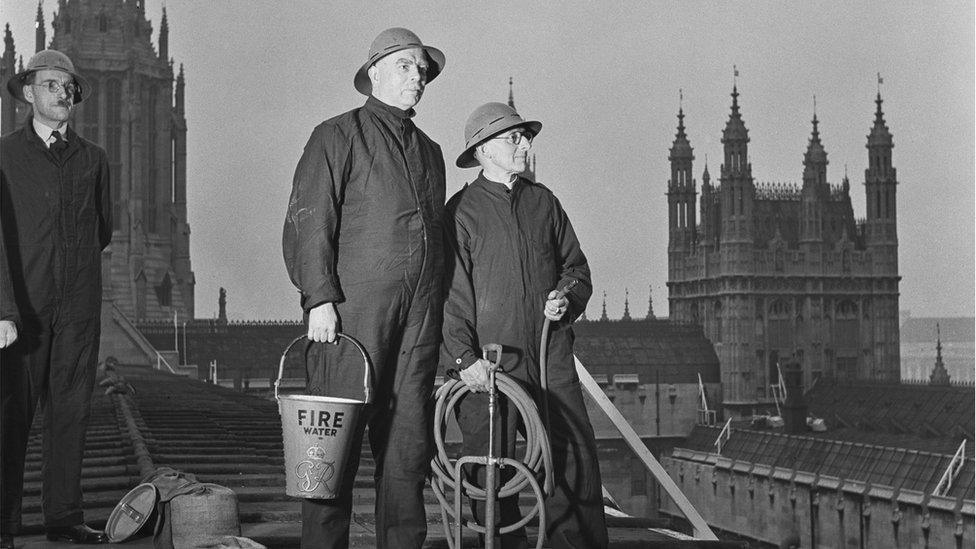
Members of the Palace of the Westminster Home Guard company on fire watch duty in 1942
Commons Speaker Sir Lindsay Hoyle said it was a day to remember the staff who "tried to save the palace," and gave thanks to "the nations of the Commonwealth who contributed to the rebuilding of this great chamber when our country was on its knees".

Lord McFall (left) and Sir Lindsay Hoyle (right) laid wreaths for those who lost their lives in the bombing
Lord McFall, the newly elected Speaker of the Lords, said it was right "that both Houses of Parliament are coming together today to remember the bombing of Parliament over 80 years ago".
"What's striking is that the immense commitment of parliamentary staff to public service is as true today as it was then, but now in very different ways during the pandemic."
The destruction meant MPs had to relocate to the grandeur and space of the House of Lords.
From the House of Lords, Winston Churchill said the Commons chamber must be rebuilt exactly as it was before.
"We shape our buildings and afterwards our buildings shape us," he told those in attendance.
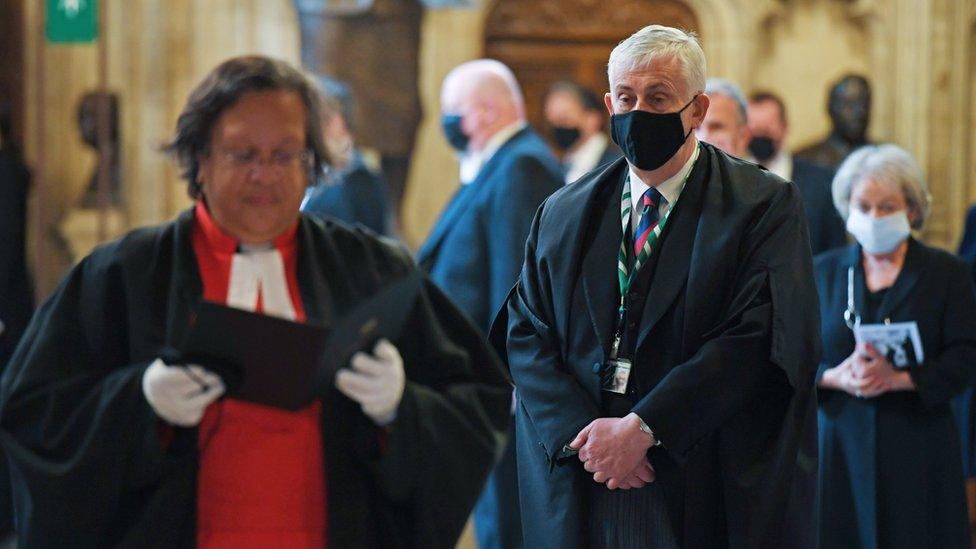
The Speaker's chaplain, Rev Tricia Hillis, led a short service
Churchill also believed that the lost chamber represented the essence of British parliamentary democracy. He thought recreating the Commons chamber would be an emblem for the future. This is symbolised by the incorporation of the surviving, but burnt, arch from the old chamber at its entrance.
Work on the new chamber began in May 1945 and was finished in October 1950. It cost more than £2m (around £42m today) - almost twice the original budget.